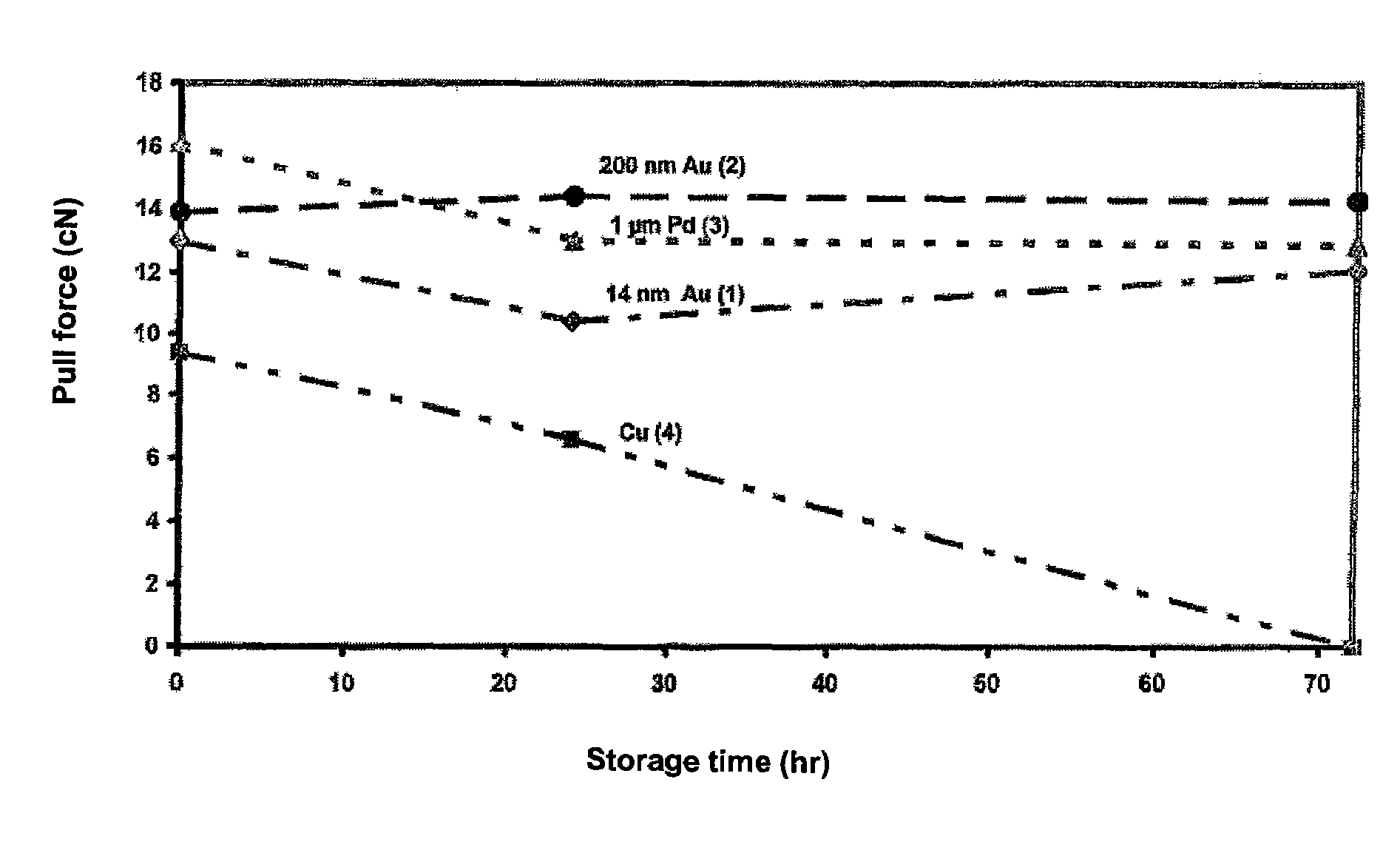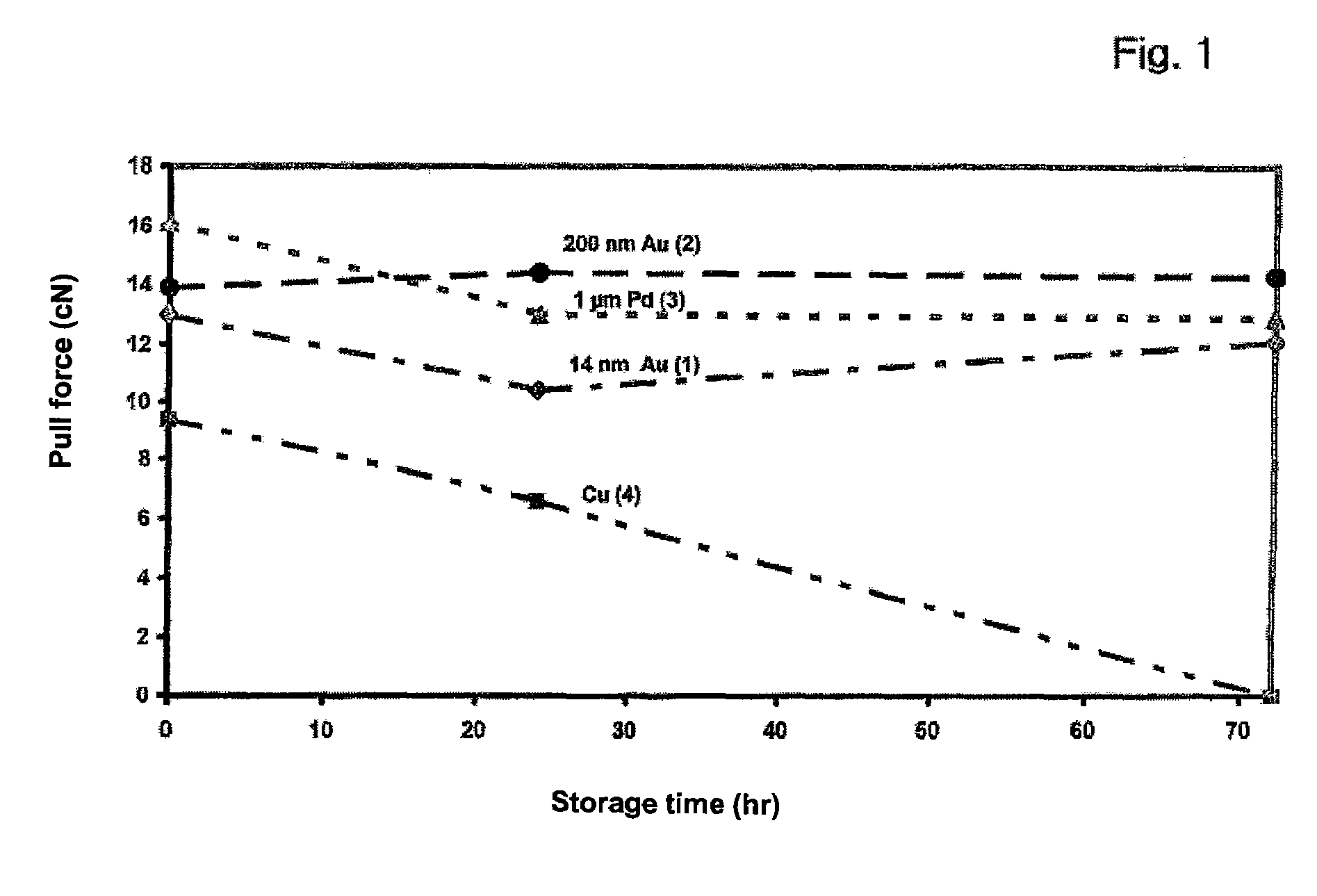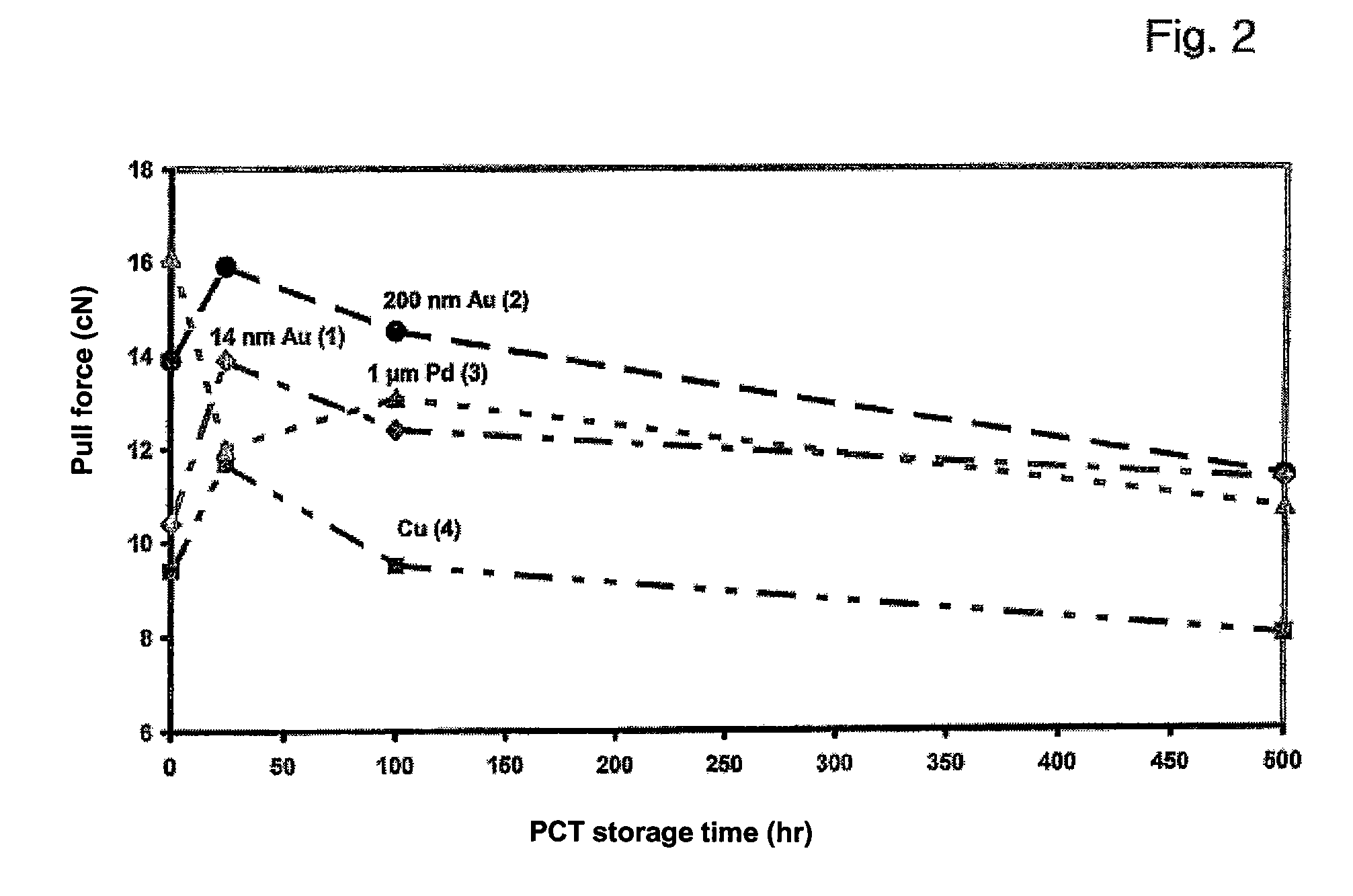Copper bonding or superfine wire with improved bonding and corrosion properties
a superfine wire and copper technology, applied in metal-working apparatus, solid-state devices, textiles and papermaking, etc., can solve the problems of loss of bonding capability, poor electrical and mechanical properties in comparison with copper or silver, undesirable hardness, etc., to improve the electrical and mechanical properties of copper, prolong the service life, and prolong the service li
- Summary
- Abstract
- Description
- Claims
- Application Information
AI Technical Summary
Benefits of technology
Problems solved by technology
Method used
Image
Examples
example 1
[0038]From FIGS. 1 and 2 it can be seen that a copper bonding or superfine wire according to an embodiment of the invention is corrosion stable with a 14 nm gold coating 1, and has a loop schear-off force comparable to bonding wires made of pure gold or pure copper. Thus, the bonding wires according to the invention are corrosion-stable relative to pure copper wires 4 and have an improved conductivity and improved stability relative to gold bonding wires. In an inventive manner, a choice was made between the possibilities of alloying or coating copper with gold, in which the increasing hardness of gold-copper alloys plays no role upon bonding, and therefore the chips 29 to be bonded are not damaged when pressing on the bonding or superfine wire.
[0039]The ball 21 provided for the bonding process remains soft, despite the corrosion protection, although gold-copper alloys are considered hard.
example 2
[0040]Cu-wire of 99.995% purity is electrolytically coated. The Cu-wire output diameter is 250 μm.
[0041]The Au-coated wires are pulled to 25 μm thickness by repeated pulling. In a subsequent pass-through annealing, the wires are set to a tearing load of 13 cN with a resulting breaking stretch of 14% (“soft condition”). To prevent oxidation of the freshly pulled wires, coils are vacuum-welded in PE film.
[0042]The wire used here would have a coating 20 nm thick, if the gold did not diffuse into the copper, or the copper into the gold. The diffusion obscures the phase boundary, so that a layer thickness can only be given for a fictitious jacketing, which is not real due to the diffusion. The wire obtained is copper-colored. Thus, when describing the invention, the designation gold-enriched surface is used instead of the expression gold jacketing or coating.
example 3
[0043]The above-mentioned bonding wires 20 are subjected to open storage and after a predetermined period of time undergo a bonding test per ASTM, 100 Barr Harbor Drive, West Conshohocken, Pa. 19428-2959 and G. G. Harman, “Wire Bonding in Microelectronics,” McGraw-Hill 1997, pp 67ff.
[0044]The bonding conditions are as follows:
[0045]Ball-wedge bonder (ESEC 3088) with the bonding parameters:
[0046]a) Ball side (impact 2000; force 3000; time 32; US 80) and
[0047]b) Wedge side (impact 300; force 1500; time 30; US 20)
The numeric specifications are bonder parameters.
[0048]As a substrate are used:
[0049]1. Gold-jacketed Cu—Sn6 substrate
[0050]2. Al-metallized Si chip
[0051]FIG. 1 shows the schear-off force resistance of the wire loops. The schear-off strength is determined using a pull tester (DAGE BT 22) and the so-called hook test MIL STD 883F, Jun. 18, 2004, Microcircuits, Method 2011.7.
[0052]The diagram in FIG. 1 shows a comparative storage resistance of a 14 nm Cu—BW 1 as a massive gold wi...
PUM
| Property | Measurement | Unit |
|---|---|---|
| diameter | aaaaa | aaaaa |
| thickness | aaaaa | aaaaa |
| thickness | aaaaa | aaaaa |
Abstract
Description
Claims
Application Information
 Login to View More
Login to View More - R&D
- Intellectual Property
- Life Sciences
- Materials
- Tech Scout
- Unparalleled Data Quality
- Higher Quality Content
- 60% Fewer Hallucinations
Browse by: Latest US Patents, China's latest patents, Technical Efficacy Thesaurus, Application Domain, Technology Topic, Popular Technical Reports.
© 2025 PatSnap. All rights reserved.Legal|Privacy policy|Modern Slavery Act Transparency Statement|Sitemap|About US| Contact US: help@patsnap.com



